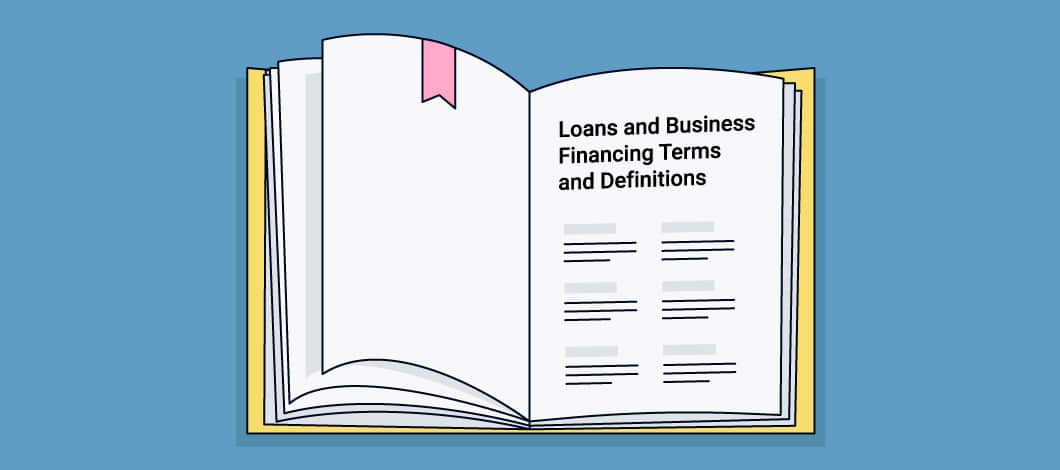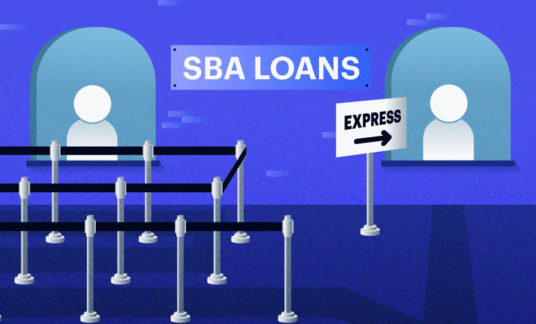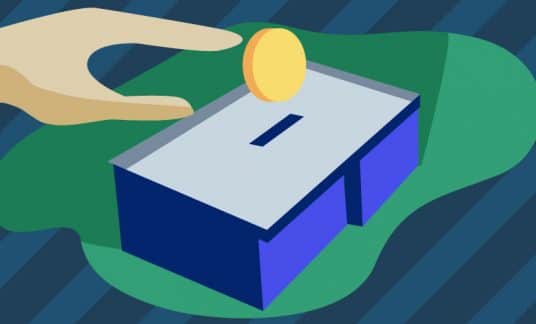Looking to expand your business vocabulary? We’ve compiled a list of the top business finance terms and definitions, ranging from the most basic to more complex. When it’s time to report financial results or apply for a small business loan, you’ll know which words to use. Here’s your guide to business finance terms 101.
Small Business Finance: A Definition
Small business finance, by definition, encompasses the various ways businesses obtain and spend their money. It covers strategies, practices and other processes relating to the generation and expenditures of earnings.
Business Terms Glossary
Let’s build your knowledge of financial terms and definitions, starting with the following basics:
1. Assets
One basic finance term to know is assets. These are resources of value your business owns and are categorized into a few different types.
- Current/Liquid Assets: These assets include any resource that can be quickly turned into money and include stock holdings, business bank account balances and inventory.
- Fixed Assets: These assets — namely real estate and equipment — aren’t as easy to turn into cash. They take time to sell.
- Intangible Assets: These are assets you can’t physically touch, including brands, patents and intellectual property. Despite their nature, intangible assets still have the ability to make you money.
2. Liabilities
While assets can add cash resources to your business, liabilities can drain them. Liabilities are anything your business is legally responsible for paying. They include loans, credit card debts and invoices payable to vendors.
- Current Liabilities: These types of liabilities must be paid in the short term. They include things such as vendor invoices payable to inventory suppliers.
- Noncurrent Liabilities: Long-term liabilities, those that won’t be repaid within a year, are considered noncurrent. Noncurrent liabilities include business loans, mortgages and other long-term debts.
3. Expenses
Expenses are any type of cost associated with your business. They can be fixed or variable.
- Fixed Expenses: Expenses that do not fluctuate month-to-month or year-to-year are fixed. These include costs like rent, equipment leases and insurance.
- Variable Expenses: These expenses aren’t always the same. Common examples are commissions, shipping costs and inventory purchases.
4. Accounts Receivable
Sometimes dubbed A/R in financial terminology, accounts receivable is the money your business is owed for its goods or services rendered.
5. Accounts Payable
In business financial terms, accounts payable are liabilities that represent the money you owe vendors and suppliers for goods or work performed.
6. Gross Profit
Gross profit is calculated by subtracting the total cost of goods sold (what you paid to acquire, manufacture and sell products) from revenue. The formula looks like this:
Revenue (Sales) – Cost of Goods Sold = Gross Profit
It’s used to calculate gross profit margin, a crucial metric of profitability.
7. Net Income
Often referred to as the bottom line, net income is the total amount of profit your business sees over a specified accounting period after all expenses and costs have been subtracted from revenue.
8. Working Capital
Working capital is the difference between your current assets and liabilities. It refers to the amount of money you have on hand, including assets that can be quickly converted into cash.
9. Cash Flow
Cash flow is the movement of real or virtual money to and from your business. Tracking all of your transactions allows you to see trends in your cash flow.
There are 3 types of cash flow:
- Operating Cash Flow: The cash generated from a company’s activities
- Financing Cash Flow: Cash circulating among company investors and debtors; includes money from issuing debt and equity
- Investing Cash Flow: Includes cash flow from a company’s long-term investments or the purchase or sale of fixed assets
10. Depreciation
When assets lose value due to wear and tear or other causes, they have depreciated. It’s important to track how your assets depreciate as you calculate the value of what you have on hand.
11. EBITDA
Your earnings before interest, tax, depreciation and amortization (EBITDA) is another business term to know and is a good indicator of your company’s performance.
Why is this adjusted earnings figure important? It spells out how much cash a business generates from operations.
You can use either of these formulas to calculate EBITDA:
EBITDA = Net Income + Interest + Taxes + Depreciation + Amortization
OR
EBITDA = Operating Income + Depreciation + Amortization
12. Employer Identification Number
Your employer identification number (EIN) is given to you by the IRS. It’s used like a personal Social Security number and is necessary for payroll and business tax purposes.
13. Automated Clearing House
Automated clearing house (ACH) is a system used to transfer funds electronically. Using ACH, businesses can pay for goods or services and collect money from customers without using a paper check.
Business Accounting Terms and Definitions
You need to create myriad reports to track your financial performance as you run your small business. Let’s break down additional financial terms and concepts to help you get ahead of the game.
14. Balance Sheet
A balance sheet gives you a broad look at your assets and liabilities. It can be used to find your company’s equity or its net worth.
Here is the formula:
Assets = Liabilities + Equity
15. Profit-and-Loss Statement
A profit-and-loss statement (sometimes referred to as a P&L) is another common finance term. It shows you how much your company has made and spent in a given period and whether you have netted a profit or a deficit.
Use the following simple formula:
Revenue – Expenses = Profit (or Loss)
16. Cash-Flow Statement
Your cash-flow statement shows a record of the money coming in and going out for a specified period.
Include accounts receivable and other revenue, then subtract your day-to-day expenses along with any other operating, investing and financing costs.
17. Debt Service Coverage Ratio
Your debt service coverage ratio (DSCR) shows lenders and creditors how much money you have to pay off existing or future debts.
Use the following formula:
Net Operating Income / Debt Service* = DSCR
A DSCR exceeding 1 means your income is higher than your debt payments. This is important for lenders to know before allowing a business to assume more debt.
*Debt Service = Interest and Lease Payments + Principal Repayments
18. Accrual Basis Accounting
This common accounting practice records incomes and expenses as they happen. Some accruals that are reported include wages and payroll taxes.
Business Credit Terms and Definitions
Many business finance terms are related to credit. Add them to your business and finance vocabulary and have a leg up when you’re in the market for a business loan.
19. Business Credit Report
This report includes your full business credit history including payments, loan balances and open lines of credit. It’s used to judge your business’s risk profile.
20. Business Credit Score
Your business is issued a credit score by each of the 3 major credit-rating firms: Dun & Bradstreet, Equifax and Experian.
While the ranges and factors vary by firm, the scores can provide lenders a quick overview of your company’s creditworthiness when you’re applying for financing.
-
Small Business Tip: Unsure of how your business credit report and scores affect your ability to be approved for a small business loan? Learn more about the ranges, factors and everything else that goes into your business credit profile.
21. Credit Limit
When securing a business credit card or line of credit, your credit limit is the maximum amount of money you’re able to borrow.
22. Bankruptcy
Filing for bankruptcy protection is an option for small business owners facing severe financial challenges.
It should only be considered if you’ve exhausted other options, as it will put a derogatory mark on your credit report that might impact your ability to secure future funding.

Loans and Business Financing Terms and Definitions
At some point, you may seek a small business loan or another type of financing to fund your next project. Knowing each business financing term and definition can help you understand your options and find affordable loans.
23. Debt Financing
When you run a business, debt financing is another business finance keyword to know. It involves taking on debt that must be repaid in scheduled increments. Debt financing includes loans, bonds and lines of credit that allow you to keep full control of your business.
24. Equity Financing
Equity financing requires you to give up a portion of your equity in the business to obtain funding. A common example is a business owner who gives up a percentage stake in their business to an investor in exchange for a sum of cash.
25. Annual Percentage Rate
Another financial term to know is annual percentage rate (APR). The APR of a loan or line of credit is the total amount of interest and fees you’ll be charged over the course of a year.
-
Small Business Tip: Considering a small business loan but aren’t sure what costs are associated with them? Use our commercial loan calculators to get an estimate of what it will cost you to fund your business.
26. Fixed Interest Rate
A fixed interest rate stays the same over the life of your loan, regardless of changes in the economy.
27. Floating (Variable) Interest Rate
Floating, or variable, interest rates will fluctuate depending on changes in the market. The rates will go up or down at intervals specified in your loan contract.
28. Factor Rate
A business finance key term common in the alternative financing sector is factor rates. Factor rates are used to calculate the cost of borrowing in certain business financing products, including merchant cash advances.
Instead of using the unpaid balance to accrue interest month to month, factor rates calculate a total amount of interest at signing that must be repaid, no matter what.
29. Loan Principal
The total amount you borrow, or the current balance of your loan, is the principal. This is used to calculate interest.
30. Amortization
Amortization is the process of paying off debt through regular installment payments. Each payment covers a portion of the loan’s interest and principal balance.
31. Loan Default
A loan goes into default when a business fails to make loan payments. Lenders will notify credit bureaus when a loan is placed in default, which will have a sharply negative effect on a business credit score.
32. Collateral
Many small business financing options require a company to offer collateral. These can be any assets a lender can seize if a loan goes into default. Examples include equipment, vehicles, real estate and inventory.
33. Personal Guarantee
A lender may require you to sign a personal guarantee. This legally binds you to act as guarantor of the loan, becoming liable for the balance in case of default. Personal guarantees are common in unsecured debt agreements.
34. Lien
A lien can be placed on one or more of a business owner’s assets when they borrow money from a creditor. It is a legal claim the lender can use to recoup losses if you’re unable to repay your debts. A lien will remain in place until the debt is repaid in full.
35. Secured Loan
A secured loan is any type of financing that requires collateral to secure it. Common examples are mortgage and equipment loans, which use the property you’re purchasing as collateral. Secured loans may also require a personal guarantee.
36. Unsecured Loan
Unsecured loans, on the other hand, are not backed by collateral and are considered riskier as a result.
37. Debt Consolidation
Businesses with more than one loan payment every month might consider debt consolidation. This practice takes all your current debts and combines them into one loan, with one payment, one due date and one interest rate. Sometimes, it may result in a lower total monthly payment as well.
38. Loan-to-Value Ratio
Common in commercial real estate loans, the loan-to-value (LTV) ratio determines the percentage of a loan that a lender is willing to give you, compared to the total value of the item financed.
For example, a bank may give you an 80% LTV for a commercial mortgage. If the property is valued at $500,000, the most the bank will finance is $400,000. That means you’ll need to come up with a 20% ($100,000) down payment to reach the purchase price.
39. After-Repair Value Ratio
The after-repair value (ARV) of a commercial real-estate loan is the perceived value of the property after upgrades and renovations are made.
The ARV ratio determines how much of that value the lender is willing to loan you. An ARV of 60% on a $500,000 mortgage would mean you would need to come up with 40% ($200,000) of the purchase price on your own.
40. Term Loan
Debt financing that you take out and repay over a set period is considered a term loan. Term loans may have fixed or variable interest.
41. Invoice Financing
Invoice financing uses your outstanding accounts receivable balance to secure a loan or line of credit agreement. This lending option is a good choice if you’re in the business-to-business space and you have long turnaround times for receiving customer payments.
42. Merchant Cash Advance
A merchant cash advance (MCA) is a funding product that gives you an advance of cash, repaid by your business’s future sales. These can be repaid through a percentage of your credit card sales or, more commonly, ACH payments withdrawn from your business checking account, often on a daily basis.












